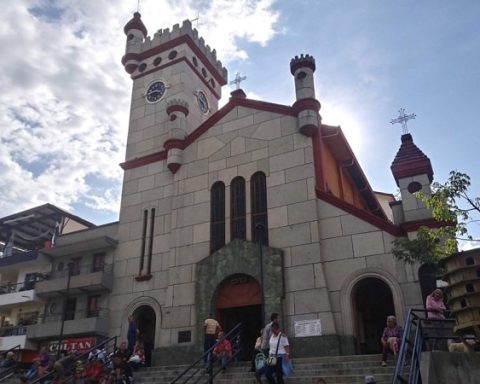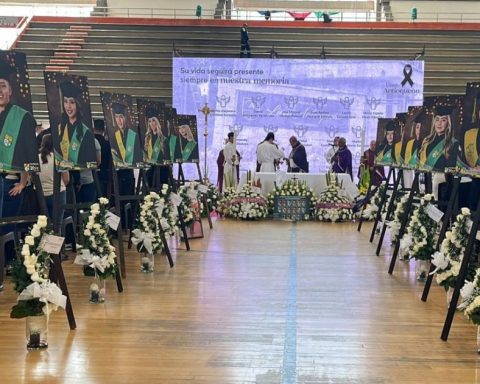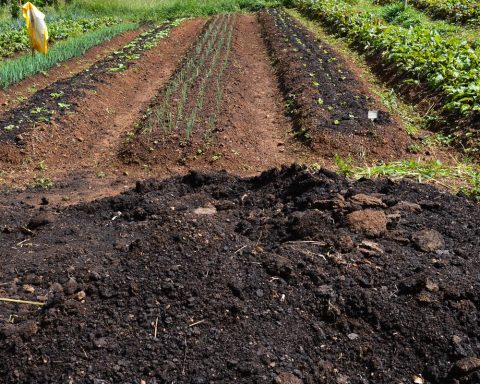With ten medium-scale gold mining projects, but of industrial production, the country follows the path with the roadmap that it outlined to increase the volume of extraction of the precious metal.
(Gold and copper, cards that the country plays in the mining sector).
The mining complexes, located in the departments of Antioquia, Caldas and Risaralda, They would deliver close to 500,000 ounces of gold per year to the country in the middle of the production stage, which would be added in the medium term to the volumes that the Buriticá, Soto Norte and Gramalote gold centers would contribute.
Thus, this operation for the production of gold on a medium scale, considered as the ‘B league’ for the extraction of the metal, It is concentrated in the Anza, Titiribí, Marmato, Quinchía, Guintar-Niverengo, Guía Antigua, Soto Norte, Santa Rosa/San Ramón y Cisneros and Yarumalito projects, initiatives whose extraction would range between 20,000 and 150,000 ounces per year.
(Gold miners, stock market winners due to the pandemic).
“In these moments of international health crisis, the price of gold has risen to historical highs, therefore we accompany these mining complexes so that they continue to undertake and generate resources and benefits for their regions and the country. It is the golden opportunity for Colombia”indicated Carolina Rojas, deputy minister of Mines.
THE OPERATIONS
Precisely, one of the extractive projects that is on the line between medium and large scale is that of Marmato, located in the municipality of the same name in the department of Caldas and that in two years will go from extracting 25,000 ounces per year of precious metal to 150,000 ounces per year, thanks to an investment of US$300 million.
Lombardo Paredes, CEO of Gran Colombia Gold, multinational that develops the initiative, pointed out that with these resources not only is the expansion in production capacity of the existing mine being carried out, but also the assembly of another underground one will be developed.
“The existing mine is an underground complex called La Maruja, whose current production is 25,000 ounces per year, and the idea is to increase extraction to between 35,000 and 40,000 ounces per year. Among the works, the processing capacity of the plant will be improved and the acquisition of more equipment for a more industrialized operation”, Paredes explained.
Another of the medium-scale mining complexes that will contribute to the country’s gold production is Cisneros, which is developed by the multinational Antioquia Gold, and whose extraction would be estimated at between 20,000 and 30,000 ounces per year.
Company spokesmen told Portfolio that the total investment has been US$88.9 million, of which US$60.2 million were allocated to the assembly of civil works and infrastructure, and US$28.7 million were disbursed for the gold production itself in the underground mine.
Juan Camilo Nariño, president of the Colombian Mining Association (ACM), has reiterated in various scenarios that the entry of the Antioquia Gold project, as well as the development of other gold initiatives of lower production but that are important due to their industrial nature, They will contribute in a sustained way to the country’s gold production and, therefore, to exports.
PROSPECTIVE
Of the aforementioned number of mining projects in the ‘B league’ in the country’s gold operation, three complexes whose prospectivity is estimated at more than four million ounces (Monz) stand out.
These are Titiribí from the SunWard mining company with 4.6 Moz, and Guía Antigua and Zancudo from the multinational ESV Resources, and whose remnants are calculated for each of them at approximately 4.7 Monz.
Likewise, The Anza (Newmont/Agnico Eagle), Quinchía (Miraflores), Guintar-Niverengo (Royal Road Minerals) and Yarumalito (Gool Mining) projects are still undergoing exploration studies to more accurately calculate the prospectivity of the respective mines. .
“Agnico Eagle has been eyeing Colombia for a while, and this operation is consistent with our exploration strategy,” said Guy Goselin, Senior Vice President of Exploration for that firm.
Finally, the Santa Rosa/San Ramón project, which was being developed by the multinational Red Eagle Mining, remains suspended, and both the Government of Antioquia and the National Government are still waiting to find out about the new operator or for the current concessionaire to return the mining titles. .
And the uncertainty is total, since there is no certainty about the future of the project, since since Red Eagle Mining, holder of the license, production stopped two years ago, and it has not reported whether it will hand over the titles, or would transfer the operation to another mining company.















